#Canadian Environmental Protection Act
Text
Changes to the Canadian Environmental Protection Act enshrining the right to a healthy environment have passed into law.
The federal government has been working on the legislation for several years, and introduced the latest version in the Senate in February.
It also adds a sentence to the act guaranteeing that every Canadian has the right to a healthy environment and makes it a duty of the government to protect that right.
The government now has up to two more years to define how that right will be implemented when it comes to enforcing the act.
Critics have said the law would be stronger if that right were enshrined in the Constitution, but the government is not interested in that change. [...]
Continue Reading.
Tagging: @politicsofcanada
133 notes
·
View notes
Text
In the previous post I introduced Greenpeace. These are some wins from June posted on their website.
- Hyundai Construction Equipment commits to help stopping illegal mining in the Amazon
Greenpeace East Asia released the Stop the Excavators report in April of this year, calling to heavy machinery manufacturers to take measures that prevent their equipment being used illegally, in ways that cause violations of human rights.
This exposé revealed that Hyundai Construction Equipment is apparently the favoured brand used in illegal mining in Indigenous Lands in the Amazon.
Hyundai has now announced a series of measures to protect the forest, and will act to prevent this in the future.
- ReconAfrica suspends oil drilling in Okavango Delta
The Canadian oil company ReconAfrica has stopped drilling in Namibia’s Okavango Delta, after it was faced with lawsuits and environmental concerns. For now, the drillings have only been suspended, but this is a step in the right direction, proving that people power can work wonders.
In 2019, ReconAfrica announced fracking in some of Africa's most sensitive (both in terms of water supplies and as livelihoods for the communities in the area) environmental areas. Namibian youth climate activists, indigenous, environmental and human rights groups have been working since then to prevent this from happening.
- ASEAN steps up commitment to end forced labour and human trafficking practices of migrant fishers
In May 2023, ASEAN (Association of Southeast Asian Nations) leaders officially adopted the first ASEAN Declaration on Migrant Fishers Protection in history. This declaration follows many years of active campaigning by human rights advocates and civil society organizations. The campaign aims to push stronger policies to protect Southeast Asian migrants working in fisheries and their rights.
This declaration emphasised that protecting and fulfilling the rights of migrant fishers is an entire migration cycle (recruitment, placement, and repatriation), and so is a shared responsibility among the ASEAN states.
- Local fishers and civil society join forces to reforest mangroves in Senegal
The local community in the traditional fishing town Joal in Senegal started reforesting mangroves in a show of what direct action is really about.
Joal is located near mangrove forests, that are essential breeding grounds for many fish species, and are vital therefore for the fishing communities in those areas. They also store more carbon than tropical forests, and are capable of curbing climate impacts such as floods.
- Dutch creative agencies choose to no longer work with fossil fuel companies
23+ creative agencies in The Netherlands put together a Fossil No Deal, stating that they will stop working with fossil companies and no longer encourage fossil passenger transport. They call it verdrag verantwoord verleiden, a treaty for responsible seduction.
- Thailand applies new PM2.5 ambient standard
In the beginning of June, the new PM2.5 ambient standard was officially applied in Thailand.
The new standard is now 15 μg/m3 for the annual standard and 37.5 μg/m3 for 24-hour standard, which is in keeping with the revised WHO air quality guidelines. This is a big step in the right direction to help reduce PM2.5 and solve air pollution in the country.
Greenpeace Thailand is still not at rest, though, and are continuing to fight to get the PM2.5 at its source, that is from the industries.
- In New Zealand, FSC abandons plans for ‘GE learning’ process
Greenpeace Aotearoa and other environmental organizations have been pressuring the Forest Stewardship Council (FSC) certification scheme to abandon its plans for a ‘Genetic Engineering (GE) learning’ process.
The long-standing principle of not certifying GE trees came under threat after pressure from FSC certified plantation company Suzano from Brazil that has a subsidiary doing GE eucalyptus tree research trials (for glyphosate resistance).
- Citizens say yes to net zero emissions in Switzerland
Swiss citizens have voted in favour of a new law to reach net zero emissions by 2050. The new climate law, which was initiated seven years ago, passed a referendum with about 59% of the voters.
Net zero is now enshrined in the “federal law on climate protection, innovation and strengthening energy security“.
Let me know if there's anything else you'd like to see, news from your own countries, or if you'd like to add anything or share.
I'm also here to listen, my DMs and Asks are always open :)
Love you all, and see you next time, be safe!
#climate#hope#good news#more to come#climate emergency#news#climate justice#hopeful#positive news#positivity#greenpeace#climate change
37 notes
·
View notes
Text
okayyyy also. tagged by @joelletwo for 5 topics i could talk about for an hour with no prep.
now. two things. 1. i have infernal podcast dude energy and could say a lot about nothing. weird trait to have if u dont like talking to people? hard to say. 2. GESTURES AT BLOG. im ALREADY. talking at length abt my beloved shit. so im just ruling out turtles, alien robots, trek, etcetcetc all the shit thats been a main blog topic for the last past. 4 years?
I'm gonna say.... western voice actors? not that i could really. Give a lecture so much as. I'm way more familiar with them that than I am live action actors. And I'm kinda just CONSTANTLY like. Oh you know so and so from every cartoon youve ever fucking seen? And FEEL a real. gap. with people when they dont have a same reference point. probably like how ppl feel with me when i dont know their acting guys jhadbgjfga. Like u can name 5 VAs from ur childhood cartoons/animated movies right? And personal interest like, hey btw u know like the entire cast of tng was in disneys gargoyles? U know keith david can SING? And diego luna? Hey you know about Canadian actors who are in all the dubs and video games and yeah cheap shit? You know Scott McNeil right? You know Ian James Corlett? You know. THE IAN. of being Ian. Hello. is this thing still on?
I really like and care about the topics of education, children's rights and pedagogy? Not academically so much as, personal interest. What seeing very clearly that there was a lot of arbitrary rules that involved things like. The Government. and Systems. as a child does to a motherfucker I guess? I'm always INTERESTED in a discussion about it, is how i mean I guess. Like focuses of multiple intelligence and "applied knowledge" (and short comings there of). I mean long and short of it. Kids are full human beings and until u can grapple with that their feelings and opinions um. Actually matter. I hate you? jdhbgjhdb. And Naturally the world being good for kids has the prerequisite of it not sucking ass for adults too....
UHhhh guh. User design/civil engineering? You'll hear it from me until the day I die, crushed under the tires of a ford f1 giga truck with the LED 20million watt bulbs. PROTECTED BIKE LANES. for the love of god. I just know a lot of designers I guess and like engineering, conceptually. But like, u know that famous bridge everyone crashes into. If theres 80million warning signs and people are still crashing... maybe theres. other factors. Or you know ofc like, traffic planning, vehicle accidents, structural disasters. A lot of them are not just. Things happening. Tragedies. There's politics there. Usually a lot of Money stuff. and structural racism. The real reason your fridge is full is that there's a bunch of half empty condiment jars hiding all your forgotten left overs. And widening the roads isnt gonna do shit for traffic.
Jackass entry: Themes and motifs of anyyytthing ive watched with another person or saw, and like they also know it. I realllly like, visual theming and narrative shorthands. Anything that breaks like, maybe people in this setting dont have the same customs, but their gonna do something so you the audience can recognize it. Non literal/accurate use of colour and lighting, for mood and clarity. Breaking the physical shape and scale of things so they can appear and be readable on screen. COSTUMING COSTUMING COSTUMING. A well styled character can do soooo much for your understanding of a work, especially with large casts, and a poorly styled one can take me right out. Well. anyway. yes i love animation u all knew that.
uhhhhh Thatgamecompany/giantsquids studio. im giving myself a free space. lol technically I DO. blog about this. the music. at least. BUT beloved. games. Me and everyone else I guess. Hey speaking of u know its laura bailey and troy baker as the voices in the pathless? And you know how a lot of the games have themes of coming into being/growing/rebirth. And LOTS of environmentalism. And implied cultural world building, and wordless stories. and beautiful metaphor rich otherworldly visuals. and gameplay styles that really connect with the emotional story their going for. and ofc, the music. oh the leit motifs. well. there u go. sword of the sea when?
tagginggg. uh did anyone get @deadgrantaires or @army-of-bee-assassins yet? anyone elseeee who wants to regale me with things they knowww about. id love to know.
#some shit#KINDA. gave up. cause i hampered myself with the restriction not my fandoms. jadgbdhf BUT YALL ALREADY KNOWWWWW i could take u thru#my fav mirage issues or like. my favourite implications of tf stuff.#like. all the things i like to watch and like. this is a story about familys. or rebellion. or why people care about each other.#why its important to keep living. and everything iver ever blogged about. lmao#i also skipped on things like. cool machinery i like or how products are WORSE now days. even tho. djjhdbfj. if i have to talk to a#less known person i would consider those like. safety topics. dgjhdf#if u wanted to be really vague i could to a tangential daisy chain all themed around the colour blue. ofc.
16 notes
·
View notes
Text
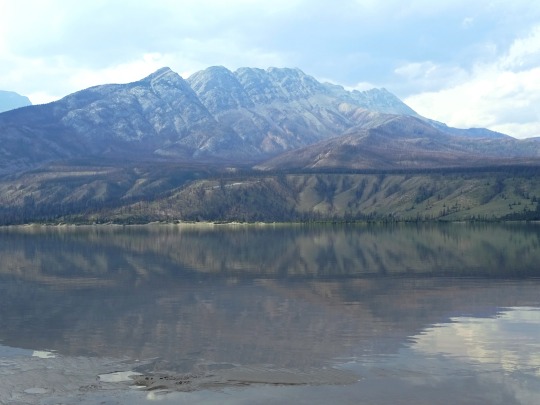
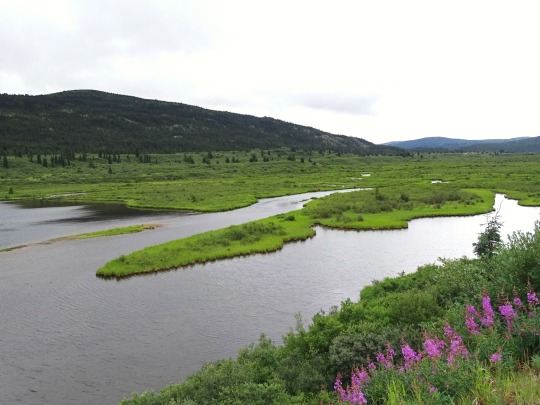

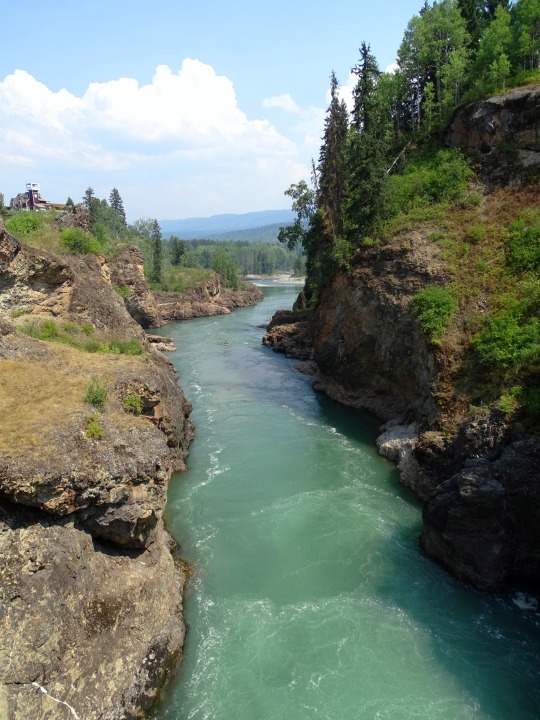

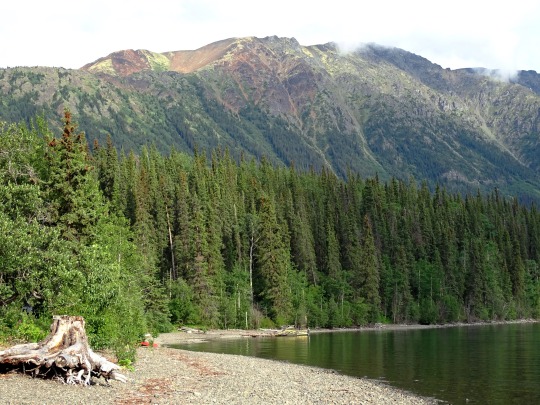

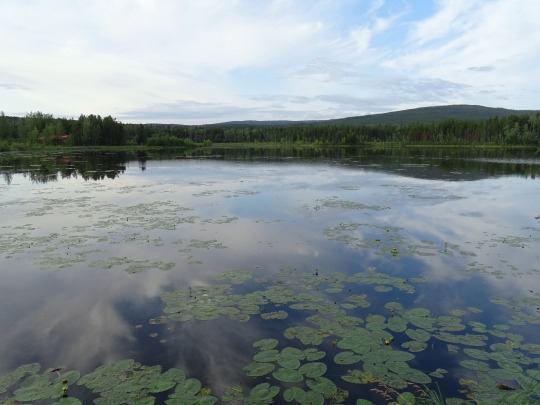



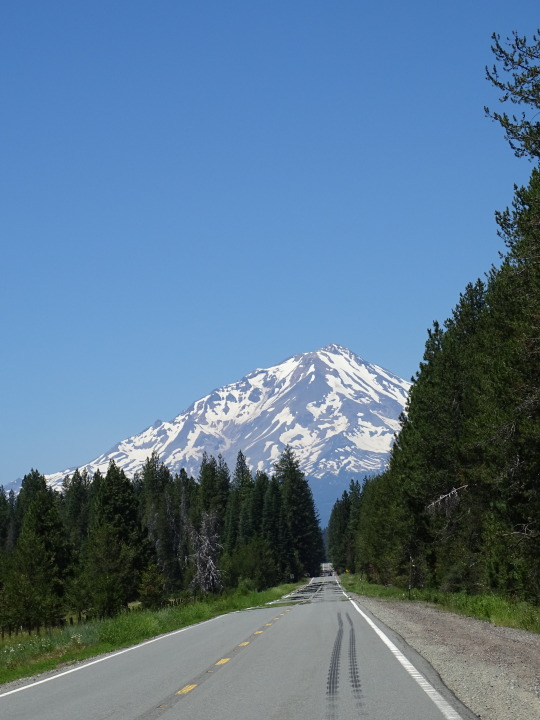

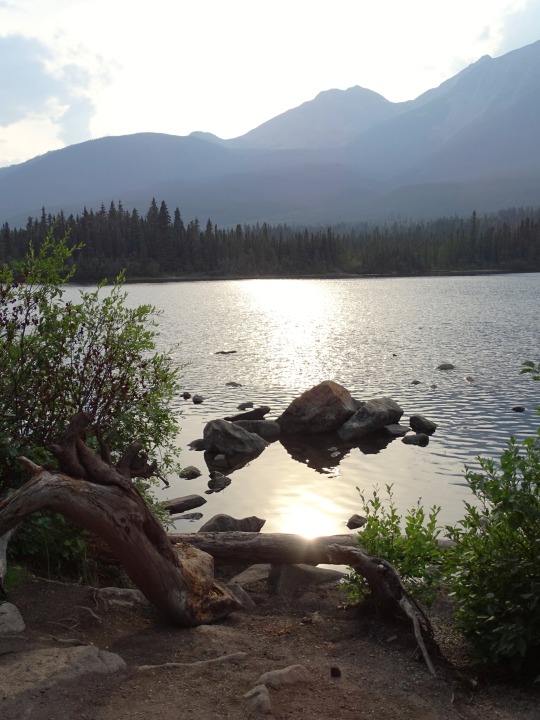


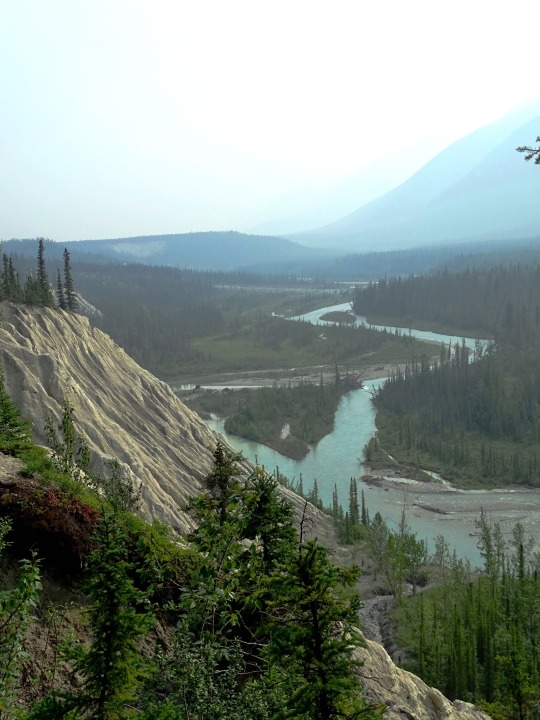


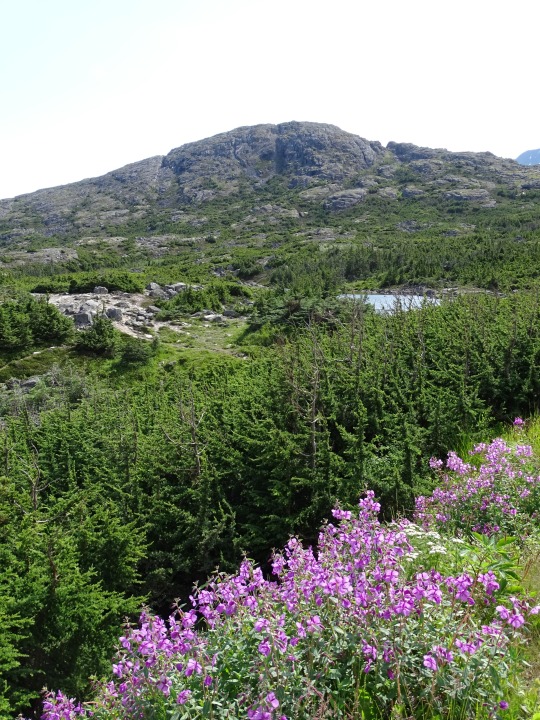

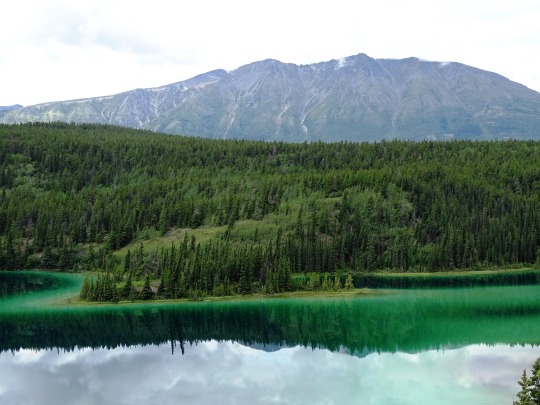

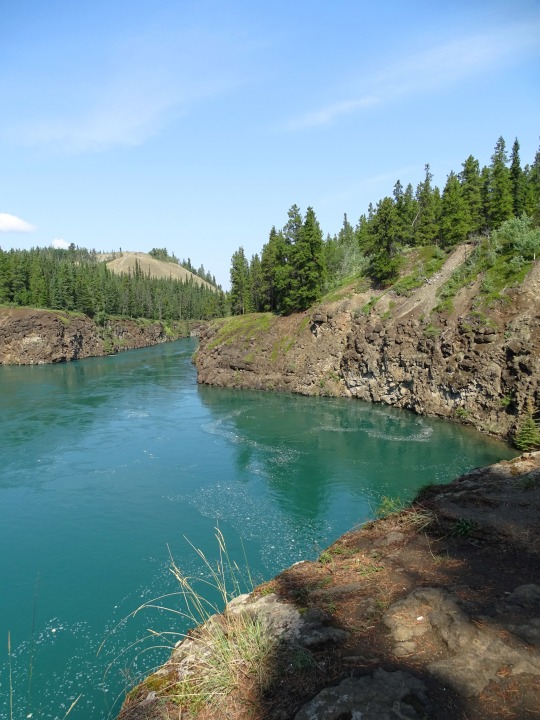




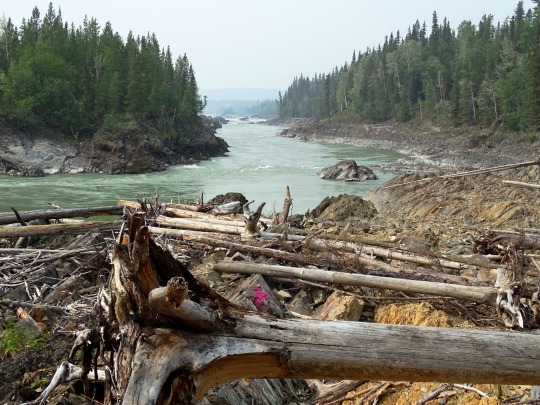
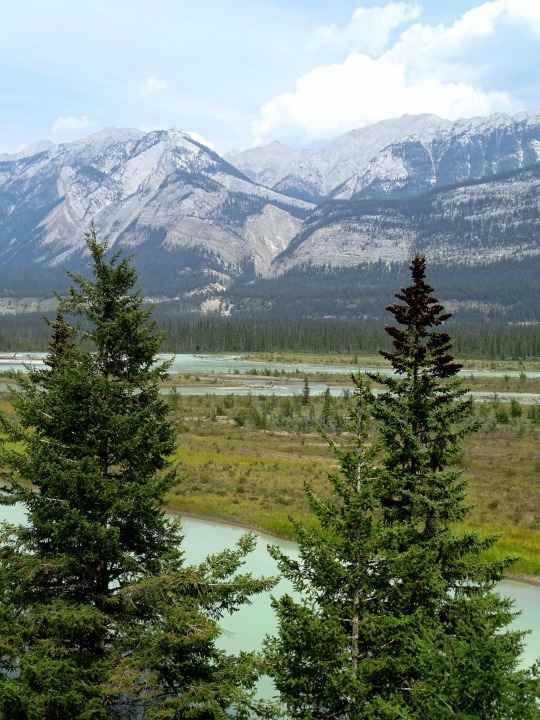
World Environment Day
World Environment Day urges all of us to protect our natural surroundings. The stunning facts? An estimated 7 million people die each year from causes related to air pollution, with a majority occurring in the Asia-Pacific region. This day, which falls on June 5, encourages worldwide activism. That means everything from littering to climate change. World Environment Day is both a global celebration and a platform for public outreach.
China, which now owns half the world’s electric vehicles and 99 percent of the world’s electric buses, hosted the 2019 event. “The country has demonstrated tremendous leadership in tackling air pollution domestically,” said Acting Head of UN Environment Joyce Msuya. “It can now help spur the world to greater action.” The UN first established World Environment Day in 1972.
When is World Environment Day 2024?
World Environment Day is observed on June 5 every year. Outside of our homes is the actual home we all live in, and preserving it for future generations is more crucial than ever.
History of World Environment Day
World Environment Day (WED) is one of the more unique and special holidays because of its history and its many firsts. It was created on the first day of the first-ever U.N. conference which focused on humans and how they interact with the environment.
However, this didn’t happen overnight. Sweden first suggested having such a conference to the U.N. way back in 1968. And in 1969, the U.N. agreed that after 3 years they would have a conference in Sweden that focused on environmental issues. Interestingly enough, the conference was led by Maurice Strong, a Canadian diplomat who worked in the oil and mineral industry, who also had a soft spot for the environment.
Finally, it all came together in 1972, after 4 years of preparations and $30,000,000 later. World leaders from around the world sat together to discuss how they can raise awareness to protect our environment — and it was then WED was made. Then 2 years later, the first-ever WED was celebrated with the slogan “Only One Earth.”
Ever since then, WED has been completely embraced by people everywhere, so much so that it’s even slowly creeping into pop culture (and we love it!) Celebrities around the world all encourage people, in their own unique way, to do their part and “ save the world”. Fan-favorites Leonardo DiCaprio and Meryl Streep are some of the many who constantly speak out about environmental awareness. So, it doesn’t matter if you’re a famous actor, an athlete or a student in college: gather your friends and spend a day outdoors doing fun activities towards preserving this beautiful planet. Believe us when we say, you’ll have a blast and feel so much better afterward.
World Environment Day timeline
1968 The Idea is Born
Sweden suggests to the UN to have a conference that is focused on the environment.
1972 First U.N Environmental Conference
Maurice Strong finally leads the discussions about marine pollution, human overpopulation, and global warming.
1974 A Dream Debut
The first World Environment Day is celebrated in Spokane, Washington.
2019 China Hosts World Environment Day
China raises awareness of the 7 million people who die annually from air pollution with the slogan 'Beat Air Pollution.'
Traditions of the Day
Sustainability and the protection of the environment are without a doubt among the most pressing issues we face in the world today. The core necessities of life all come from Mother Nature and, unfortunately, we take it for granted. World Environment Day encourages everyone from individuals to large-scale corporations to be more conscious of their impact on the environment.
A theme is observed every year. The theme for 2020 was ‘Biodiversity.’ Advocacy campaigns and calls for change are heavily promoted, all the while educating others to adopt healthy actions and break patterns that contribute to the degradation of the ecosystem. Just the simple act of switching off unnecessary lights has a tremendous effect. Exhibitions and events take place at educational institutions, with influential spokespeople in attendance.
By the Numbers
90 billion tons – the number of resources extracted from Earth every year.
7.8 billion – the number of people populating Earth.
4.1 billion – the number of consumers in the world.
5.6 billion – the number of consumers expected by 2030.
70% – the percentage of the world’s resources currently being overused.
2.12 billion tons – the number of waste dumped every year.
50 million tons – the number of e-waste produced every year.
$7.8 trillion – the value of the global production of synthetic chemicals.
2050 – the year when the world population is expected to be too big to feed.
2070 – the year when coral reefs are expected to be gone altogether.
World Environment Day FAQs
Is global warming real?
From the data gathered it seems so, and according to NASA, the debate is now moving from if humans are responsible for global warming to how is the best way to respond to the problem.
What fun activity can you do on World Environment Day?
Either by yourself or with a group of your friends or even family members, plant a sapling (young tree) and take a selfie with it. Don’t forget to post it on your social media with #SelfiewithSapling.
How often is World Environment Day celebrated?
Every year on June 5 World Environment Day is celebrated. The cool thing is, almost every year a new country hosts the holiday and since it was first celebrated 34 different cities in 25 countries have hosted this day.
How to Observe World Environment Day
Make a commitment to recycle
Plant a tree
Volunteer
It might seem like a basic tip, but are you really taking every possible opportunity to recycle? Next time you're thinking about throwing that piece of paper in the trash because a recycling bin isn't accessible, think twice. Holding a plastic container and too lazy to see if it's one of the biodegradable kinds? Open up your smartphone and look it up! Everyone's responsible for reducing greenhouse gas emissions — including you.
Trees absorb odors and pollutant gases (nitrogen oxides, ammonia, sulfur dioxide, and ozone) and filter particulates out of the air by trapping them on their leaves and bark. Placed strategically around a single-family home, they can cut summer air conditioning needs by up to 50 percent. By reducing the energy demand for cooling our houses, we reduce carbon dioxide and other pollution emissions from power plants.
Anyone can volunteer, and volunteering can make a difference to the whole community. Get out of your comfort zone by volunteering for the National Park Service, or stay local by volunteering at your farmers’ market. Any way you choose to participate, you'll feel the positive impact of getting out of the house and caring for the planet.
5 Interesting Facts About World Environment Day
Solar Panels
CO2 Vacuum Cleaner
The Ocean Cleanup
Plant-Based Plastic
Eco-Friendly Batteries
The largest solar farm, Yanchi Ningxia solar park in China, can provide up to 1 billion watts.
Developed in Switzerland in 2016, giant machines capture CO2 to clean the air we breathe.
Backed with $30 million and led by a 22-year-old, this company uses U-shaped screens to catch garbage in the ocean.
Created by an Indonesian company, it’s made from agricultural leftovers like corn, sugarcane, etc.
Developed in the Chalmers University of Technology in Sweden using upgraded aluminum.
Why World Environment Day is Important
It reconnects us to nature
It raises awareness
It encourages us to take action
Sometimes we forget just how much natural systems support our own well-being. But we're part of nature, and we depend on it. So today's the perfect occasion to go out and enjoy your country's national parks, and celebrate the vital relationship.
More and more people are starting to understand that we need to sustainably manage our planet's resources and ecosystems. However, that belief is far from universal. That's why World Environment Day is so important: it provides an occasion to raise awareness and teach friends and family that the physical environment is fragile and indispensable. But before you begin promoting environmental awareness in your own community, make sure that you have a thorough understanding of environmental issues yourself. There's always more to learn!
The environment has become increasingly polluted with contaminants and toxins, and these have a harmful impact on our health. They can cause respiratory diseases and cancer—and that's just for starters. By raising awareness of the issues with the air that sustains us, World Environment Day inspires us to do something about it and fix the environment we can't live without.
Source
#wood bison#elk#caribou#stone sheep#bighorn sheep#wildlife#Jasper National Park#Alberta#British Columbia#Yukon#Canada#Oregon#California#Rocky Mountains#summer 2023#travel#original photography#vacation#tourist attraction#landmark#landscape#USA#5 June#World Environment Day#WorldEnvironmentDay
4 notes
·
View notes
Text
Environment commissioner warns Canada failing to protect commercially valuable fish
The federal government is biased against listing commercially valuable fish as species at risk and needing protection, environment commissioner Jerry DeMarco said in a new audit published Tuesday.
The audit of Canada's efforts to protect aquatic species at risk was one of six new environmental reports tabled in the House of Commons.
It found Fisheries and Oceans Canada was very slow to act when the national committee that is responsible for assessing whether species need protection says a particular aquatic creature or plant is in danger.
Climate Barometer newsletter: Sign up to keep your finger on the climate pulse
And when that assessment relates to a fish with significant commercial value, the department's default appears to be against listing the fish as needing special protection.
That includes the Newfoundland and Labrador population of Atlantic cod.
Overfishing led to a moratorium on commercial fishing of Newfoundland cod in 1992, and twice since then the Committee on the Status of Endangered Wildlife in Canada assessed it as being "endangered," meaning it faces imminent danger of going extinct.
Once that assessment is made, Fisheries and Oceans Canada must review the assessment and decide whether to list the species for special protection under the Species at Risk Act. Listing the species in the act as endangered would prevent it from being killed, harmed, harassed or captured.
The first assessment on Newfoundland cod came in 2003, and it took three years for Fisheries and Oceans to review the finding. In 2006, the federal department decided against adding it to the Species at Risk Act list, and allowed some inshore fishing and Indigenous harvesting to continue.
Capital Dispatch: Sign up for in-depth political coverage of Parliament Hill
In 2010, the committee assessed the Newfoundland cod as endangered a second time. Twelve years later, Fisheries and Oceans still has not finished a review to determine what to do with that assessment.
DeMarco's audit looked at nine fish, two mussels and a sea turtle that the endangered wildlife committee assessed as needing protection. Five of the fish were marine species with significant commercial value, and in all five of those cases, the department opted against listing the fish as a species at risk.
That includes Newfoundland cod, steelhead trout, the Okanagan population of chinook salmon, yellowmouth rockfish, and Atlantic bluefin tuna.
The other four fish, both mussels and the loggerhead sea turtle were deemed to have no significant commercial value, and all seven were recommended to be listed as species at risk by Fisheries and Oceans.
DeMarco also found it took the department far too long to conduct its own reviews.
He said Fisheries and Oceans hasn't finished its review for half the 230 aquatic species that the wildlife committee recommended for an at-risk designation since the Species at Risk Act took effect in 2004.
Furthermore, the department was found to have big gaps in what it knows about species that need protection, and not enough staff to enforce protections when they are put in place.
"A bias against protecting species of commercial value under the Species at Risk Act, significant delays in listing species for protection, gaps in knowledge about species, and limited enforcement capacity all have adverse effects on ecosystems and communities," DeMarco said in a written statement.
The commissioner's fall audits also looked at policies to manage low- and intermediate-risk radioactive waste, which accounts for 99.5 per cent of all radioactive waste in Canada.
DeMarco said Natural Resources Canada, the Canadian Nuclear Safety Commission, and Atomic Energy of Canada were doing a good job managing the waste.
This report by The Canadian Press was first published Oct. 4, 2022.
from CTV News - Atlantic https://ift.tt/1RhLFS4
81 notes
·
View notes
Text
Tuesday, March 19, 2024 Canadian TV Listings (Times Eastern)
This Video Not Available in Your Country: Tuesday Canadian Lineup (Times Eastern)
WHERE CAN I FIND THOSE PREMIERES?
THAT GIRL LAY LAY (Season 2) (Paramount+ Canada)
THE VALLEY (Slice) 10:00pm
NEW TO AMAZON PRIME CANADA/CBC GEM/CRAVE TV/DISNEY + STAR/NETFLIX CANADA:
NETFLIX CANADA
BRIAN SIMPSON: LIVE FROM THE MOTHERSHIP
FOREVER QUEENS (Season 2) (MX)
PHYSICAL 100: SEASON (KR)
CURLING
(TSN/TSN5) 8:00am: BKT Tires World Women's Curling Championship: Italy vs. Canada
(TSN) 6:00pm: BKT Tires World Women's Curling Championship: Canada vs. Switzerland
MLB SPRING TRAINING (SN) 1:00pm: Orioles vs. Jays
NHL HOCKEY
(SN) 7:00pm: Penguins vs. Devils
(TSN3) 7:00pm: Jets vs. Rangers
(TSN4) 7:00pm: Leafs vs. Flyers
(TSN5) 7:00pm: Sens vs. Bruins
(SNWest/TSN2) 9:00pm: Habs vs. Oilers
(SNPacific) 10:00pm: Sabres vs. Canucks
(SN1/SNEast/SNOntario) 10:00pm: Lightning vs. Knights
BIG BROTHER CANADA (Global) 7:00pm
NBA BASKETBALL
(SN Now) 8:00pm: Mavericks vs. Spurs
(TSN) 9:00pm: Nuggets vs. Timberwolves
THIS HOUR HAS 22 MINUTES (CBC) 8:00pm
CANADA'S GOT TALENT (City TV) 8:00pm: The judges get to work finding million-dollar acts and award a Golden Buzzer or two.
MARY MAKES IT EASY (CTV Life) 8:00pm: Veggin' Out on the Grill
SON OF A CRITCH (CBC) 8:30pm: The Critches are doing their annual airing-out-the-house ritual, but when some family secrets are uncovered, it turns out they've got some dirty laundry that needs to be aired too.
COMFORT FOOD WITH SPENCER WATTS (CTV Life) 8:30pm: Snacking on pepperoni arroncini risotto pops, puffed millet and cornmeal coated chicken bites, and popcorn margaritas with margarita popcorn.
ONE MORE TIME (CBC) 9:00pm: After his hearing aids are stolen, DJ must put an end to the chain of gossip surrounding Eddie's infidelity before Eddie finds out who ratted him out to Gwen.
TREATY ROAD (APTN) 9:00pm: In Treaty 3 territory, Erin and Saxon learn about the ongoing struggle to protect the water from contamination; they visit a blockade in Grassy Narrows, Ont., where a woman poisoned by mercury explains environmental racism.
RUN THE BURBS (CBC) 9:30pm: As Camille's cookbook launch day unfolds in chaos, the Phams rally to save the event in a surprising and colorful twist.
PATHOLOGICAL: THE LIES OF JORAN VAN DER SLOOT.(Lifetime Canada) 10:00pm: Years after he brutally murdered American Natalee Holloway and Peruvian Stephany Flores, Joran van der Sloot's lifelong pattern of violence and pathological lying is exposed through rare interviews and new insights.
#cdntv#cancon#canadian tv#canadian tv listings#big brother canada#this hour has 22 minutes#canada's got talent#mary makes it easy#son of a critch#comfort food with spencer watts#one more time#treaty road#run the burbs#curling#mlb baseball#nhl hockey#nba basketball
2 notes
·
View notes
Text
Space Tech: Private Ventures and Mars Exploration

Space Tech
Beyond intrepid exploration, space technology has advanced to address pressing issues on Earth. It is becoming more and more essential to the effective operation of contemporary societies and their economic growth. Space has the potential to directly affect billions of people’s lives and open up large-scale, highly impactful solutions.
A broad term for satellites, space stations, ground stations, tracking and monitoring centers, downstream analytics and artificial intelligence, software, and other technologies, SpaceTech offers innovative ways to solve global concerns. Satellites increase communication, navigation, and earth observation capacity at low cost even in remote locations. Satellite-based earth observation data is vital, accurate, and reliable for data-driven decision-making by businesses and governments.
The underserved and otherwise unprofitable regions can benefit from high-speed connectivity thanks to the satellites. The application of action plans for intelligent agriculture, resource management (land and water), infrastructure development (urban and rural), climate and weather monitoring, environmental protection (including reducing the risk of disaster), and other purposes can all benefit from the use of satellite data.
Aerospace Innovation
The space industry is predicted to increase in value from USD 360 billion in 2018 to USD 558 billion by 2026 and roughly USD 1 trillion by 2040. Even though the Indian Space Research Organization (ISRO) is one of the world’s top space agencies and is working on projects like the Indian Regional Navigation Satellite System (NavIC) and the Mars Orbiter Mission (MOM), India currently only makes up 2%, or USD 7 Bn, of this market value.
One reason could be that the private sector’s contribution to the Indian space industry has primarily consisted of ISRO subcontracting, with ISRO historically handling the crucial value addition activities internally. Because of this, Indian private companies have lagged behind other world leaders in SpaceTech in terms of end-to-end capabilities.
The publication of SpaceCom Policy 2020, Space RS Policy 2020, Geospatial Policy 2021, and other policies, along with the creation of organizations like NewSpace India Ltd (NSIL) and the Indian National Space Promotion and Authorization Centre (IN–SPACe), have created a national push to expedite the private sector’s involvement in the Indian space area. The Department of Space is also working on a comprehensive Space Act and other policies, including launch vehicle and space exploration policies.
Because of our natural curiosity and desire to understand the universe, space travel has long fascinated people.
Recently, private enterprise and international cooperation have transformed space exploration.
This article will explore the changing face of space exploration and emphasize the importance of international collaboration and private industry.
New Space Technologies
Pioneers of Personal Space Travel
NASA, Roscosmos, and ESA were the only government space agencies allowed to explore space. However, private companies leading space innovation changed everything:
SpaceX since 2002 has resupplied the ISS, developed reusable rocket technology, and prepared to colonize Mars.
Jeff Bezos’ Blue Origin offers professional and recreational suborbital and orbital spaceflight.
Rick Branson’s suborbital space tourism company, Virgin Galactic.
Innovating, competing, and seeking commercial opportunities beyond Earth are redefining space exploration in private space ventures.
Space Exploration Companies
International Space Cooperation
Space exploration requires international cooperation even as private businesses grow:
The Earth-orbiting International Space Station (ISS) is a global collaboration marvel. European, Japanese, Canadian, Russian, and US space agencies participate.
Mars exploration: NASA, ESA, and others work on Curiosity and Mars Sample Return.
The Artemis Accords outlines global cooperation on the Moon and beyond, inviting international partners to lunar exploration.
Global Collaboration and Private Enterprises Benefits
Space exploration benefits from private sector involvement and international cooperation in a number of ways.
Innovation: By bringing in competition and innovation, private endeavors lower costs and advance technology.
Commercialization: Businesses worldwide can take advantage of commercial endeavors to expand their satellite deployment, space tourism, and resource exploitation capabilities.
Shared Resources: Working together, nations can pool resources, exchange knowledge, and take on challenging projects.
Scientific Discovery: Across national boundaries, international cooperation increases the possibility of scientific discovery and exploration.
Difficulties and Things to Think About
Although private and international partnerships present notable benefits, they also present certain challenges.
Regulation: To address new challenges, the framework governing international cooperation and private space endeavors needs to change.
Resource Management: A complex ethical and legal challenge is the responsible use of space resources, such as lunar mining.
Space Debris: Coordinated actions ought to tackle the expanding problem of space debris and environmentally friendly space operations.
Space Travel Prospects
Future space exploration could lead to asteroid mining, planet colonization, and scientific breakthroughs.
Space exploration is entering a new era as private companies and multinational partnerships change the space environment.
Space exploration is more accessible, sustainable, and transformative than ever thanks to private innovation and international collaboration. It shows our willingness to push the limits and our enduring spirit of exploration.
Mars Rover
What is Mars Rover?
A robotic vehicle that investigates the surface of Mars is called a rover. Rovers are long-range, remotely controlled vehicles that gather data and take images while traveling great distances. They have found evidence of water, ancient life, and possible resources on Mars, among many other significant discoveries.
Six Mars rovers have been successful so far:
In 1997, Sojourner became the first rover to set foot on Mars. During 83 days, it investigated the Ares Vallis region.
The twin rovers Spirit (2004) and Opportunity (2004) touched down on Mars in 2004. For many years, they investigated the Gusev Crater and Meridiani Planum, respectively. Opportunity stopped operating in 2018 and Spirit became stuck in 2010.
Gale Crater is presently being explored by Curiosity (2012). It has found evidence of ancient lakes and rivers, among many other significant discoveries.
The Jezero Crater region is being explored in Perseverance (2021). In addition to gathering samples of rock and regolith broken rock and soil for potential return to Earth, it is searching for indications of prehistoric life.
The first Chinese rover to set foot on Mars is Zhurong (2021). It is investigating the area of Utopia Planitia.
An essential component of our Mars exploration are the Mars rovers. They have made significant contributions to our understanding of the Red Planet’s potential for habitability.
Read more on Govindhtech.com
#Space Tech#MarsExploration#Ventures#SpaceTech#satellites#AI#Aerospace#NASA#technews#technology#govindhtech
2 notes
·
View notes
Text
The Timeless Merit of Ancient Things
"There is no peculiar merit in ancient things, but there is merit in integrity, and integrity entails the keeping together of the parts of any whole, and if these parts are scattered throughout time, then the maintenance of integrity entails a knowledge, a memory, of ancient things. …. To think, feel or act as though the past is done with, is equivalent to believing that a railway station through which our train has just passed, only existed for as long as our train was in it." - Edward Hyams
In a world driven forward by advancement and innovation, it can be easy to fall into the trap of believing that the past retains little importance to our present lives. Yet, as this quote suggests, the knowledge found throughout history has profound value. While ancient artifacts and events may appear distant or irrelevant, their value lies not in their age but in the lessons they hold. Personally, I believe history is one of the greatest teachers. Even within the course of my life, my successes and, more importantly, my failures have shaped the person I have become. Integrity requires the gathering of information and the forming of connections to gain a more complete perspective. It's about forming the knowledge needed to connect us with our past and guide us toward our future. To maintain integrity when faced with the uncertainty of the past, we must acquire a deep knowledge of ancient events and objects. Like a quilt, without the careful stitching of its patches, history loses its coherence; our understanding of the world suffers without the incorporation of historical context. I thought the quote's use of the train station analogy was a very effective way to support its claims further. The analogy uses each stop at a train station to represent a moment in history. To be ignorant of the significance of these stations once the train has passed through them is to miss the importance and knowledge the journey holds. Each station, however brief, contributes to the plot of the whole trip. Similarly, each period in history contributes to a better understanding of how things came to be, no matter how distant.
History serves as our roadmap, guiding us through the struggles of the present and illuminating the path forward. For example, the environmental movement sparked by Rachel Carson's book "Silent Spring" catalyzed a shift in public consciousness and laid the groundwork for critical environmental legislation (Beck et al., 2019). Though written decades ago, her work continues to create impacts today, reminding us of the power of individual actions. Moreover, interpreting history is not only for increasing our knowledge but a call to action. By documenting memories of both successes and tragedies, we commemorate the sacrifices of those who came before us and empower ourselves to shape a better future. As a community, we must embrace our heritage to cultivate a society built on principles of justice, equity, and compassion. For instance, Remembrance Day is a good example of commemorating the sacrifices of those who came before us. Every November 11 since the First World War, Canada has dedicated the day to honour the bravery and sacrifice of those who served our country and acknowledge our responsibility to recognize and respect the peace they fought to protect (Government of Canada, 2021). As a kid, I didn't fully appreciate the importance of Remembrance Day. However, after joining Air Cadets and hearing the experiences of Canadian veterans, I gained great respect for those who have served our country and the impacts their actions had.
In conclusion, while ancient objects or events may lack merit at first glance, their significance lies in their ability to give insight into periods of history. As we navigate the challenges of our modern world, we must not forget the wisdom and lessons from the past.
Government of Canada. (2021). Why Remember?. https://www.veterans.gc.ca/eng/remembrance/history/a-day-of-remembrance/why
Beck, L., Cable, T. T., & Knudson, D. M. (2018). Chapter 5: Guiding Principles of Interpretation. In Interpreting cultural and natural heritage: For A Better World (pp. 304). Sagamore Venture.
2 notes
·
View notes
Text
Republican Sen. Ted Cruz of Texas and right-wing Democratic Sen. Joe Manchin of West Virginia on Thursday introduced legislation that would prevent a federal agency from banning gas stoves.
Cruz and Manchin's bill to preempt the U.S. Consumer Product Safety Commission (CPSC) from banning gas stoves—titled the Gas Stove Protection and Freedom Act and described by progressive advocacy group Food & Water Watch as "absurd"—comes even though the agency says it has no plans to implement such a prohibition.
Climate and public health advocates celebrated last month after CPSC Commissioner Richard Trumka Jr. told Bloomberg News that gas stoves are "a hidden hazard" and suggested that new ones should be banned.
However, as Reuters reported Thursday, Trumka "walked back those comments after conservatives and energy industry groups seized on them as a way to criticize the Biden administration for allegedly overreaching with its climate and environmental policy agenda."
Food & Water Watch observed that while "there is currently no plan" to ban gas stoves, "there is substantial research documenting the hazards associated with the air pollution" the methane-powered appliances create.
A widely shared recent study found that 12.7% of childhood asthma cases in the U.S. can be tied to indoor air pollution caused by gas stoves. The findings bolstered calls from environmental justice advocates and public health experts to prohibit the sale of new gas stoves and expedite the switch to cleaner and safer electric ones, but the CPSC has yet to propose regulatory action.
"Manchin is doing his part to fuel the ridiculous right-wing panic over a nonexistent war on gas stoves," Food & Water Watch policy director Jim Walsh said Thursday. "But his intent behind this legislation is serious: to inhibit climate action and undermine agencies charged with protecting public health and safety—all in the interest of propping up his fossil fuel funders."
"As state and local governments are increasingly looking to turn away from gas in new construction—moves that will improve air quality and public health, and reduce climate pollution—Sen. Manchin continues looking backward," said Walsh.

Manchin is the top congressional recipient of cash from the fossil fuel industry, which has fought aggressively against increasingly popular campaigns to outlaw gas stoves at the state and local levels.
However, the coal baron who leads the Senate Energy and Natural Resources Committee is far from alone in his defense of planet-heating and illness-inducing gas stoves.
As The Washington Post reported Thursday, Natural Allies for a Clean Energy Future—a nonprofit group founded by a half-dozen gas companies—"has enlisted prominent Democratic politicians and pollsters to help enhance gas' reputation among liberal voters."
Former Sens. Mary Landrieu (D-La.) and Heidi Heitkamp (D-N.D.) and former Rep. Tim Ryan (D-Ohio) are among those going to bat for the fracking and gas utility industries.
"Natural Allies is backed by TC Energy, the Canadian pipeline giant behind the controversial Keystone XL project, and Southern Company, one of the biggest U.S. utilities," the Post reported. "Launched shortly before the 2020 election, the group is led by Susan Waller, a former executive at the pipeline firm Enbridge."
#us politics#news#common dreams#2023#us senate#sen. ted cruz#sen. joe manchin#U.S. Consumer Product Safety Commission#Gas Stove Protection and Freedom Act#Food & Water Watch#Richard Trumka Jr.#Bloomberg News#reuters#Jim Walsh#Chris D'Angelo#Senate Energy and Natural Resources Committee#Natural Allies for a Clean Energy Future#Mary Landrieu#Tim Ryan#Heidi Heitkamp#TC Energy#keystone xl pipeline#Southern Company#Susan Waller#Enbridge#natural gas
13 notes
·
View notes
Text
Printing For Real Estate Professionals Moo Canada
Tune into our bi-weekly station for Real Estate Tips, Tricks, Market Value, and Marketing. Real estate marketing postcards bother me somewhat bit with their content material real estate postcards. There are sure issues that you will discover on every card.
We shy away from cookie-cutter communications, utilizing relevant and specific knowledge for every buyer, and making our real estate print marketing exhausting to disregard. Prime Data is understood for its focused strategies and unique real estate promoting concepts that actually work. Real estate postcards showcase your ability to sell new homes and introduce people to your latest companies, listings, and extra.
You need a complicated unsolicited mail automation resolution like PostGrid to ship postcards in bulk to your potential consumers and sellers. The “just sold” postcards are perfect for generating new real estate leads for your corporation. However, there is one significant distinction between just sold and just listed postcards. The former is just interesting to the sellers, unlike just listed postcards which may enchantment to consumers and sellers.
These focused marketing pieces can quickly convey key messages and offerings. Direct mail and postcards have been simple and efficient for decades. Trust our employees of consultants to create a custom postcard for your small business.
Manufacturers or importers who do not meet the sales targets could face penalties under the Canadian Environmental Protection Act through a phased-in strategy. By 2030, the mandate will hit 60 per cent of all gross sales and by 2035, each passenger automobile bought in Canada will must be electric. Additionally, following completion of their post-secondary schooling, recipients might be thought of for full-time employment at TD,” Bear mentioned. The scholarship is a direct response to Call to Action #92 from the Truth and Reconciliation Commission’s report on the legacy of residential schools.
However, when you are planning to deploy a neighborhood real estate marketing technique in a small city or a county you probably can target a broader space. I use Postcard Portables as my main supply of promoting for my pizza store. I actually have chosen this technique of promoting because it offers a shiny, clear, and professional search for my enterprise. The full colour graphic that I am presently using contains a image of my own pizza and is often complimented by my clients. The particular person representing postcard portables in Moncton has been very useful in facilitating the design of my signal in addition to providing immediate service even after regular business hours.
Every business needs advertising and every one seems for better and economical ways to promote ... Powerful, modern, urgency, and trustworthy real estate marketing postcards design for Electrician. ERIKA_design was patient with our requests and did an excellent job making our trailer design flow with the design of our truck.
And since over 90% real estate prospects start their search on-line you possibly can think about why it’s necessary to grow your native model. Getting extra evaluations in your profile will assist with native SEO in addition to prove that you are an authority when it comes to real estate in your goal real estate marketing postcard market. A fast method to get some evaluations on your profile is to ship the evaluate URL of your itemizing as an e-blast to your present clients. Add footage of listings that you've bought over asking together with photos of yourself and your staff.
14 notes
·
View notes
Text
A group of Canadian conservationists says it has launched a legal challenge against Ottawa's $2 billion plan for an expanded container terminal in Delta, B.C.
The David Suzuki Foundation, Georgia Strait Alliance, Raincoast Conservation Foundation and the Wilderness Committee say they have filed an application for a judicial review in federal court��under the Canadian Environmental Assessment Act.
"The federal government has failed Canadians by approving this new terminal. Their own environmental review showed this project could condemn southern resident killer whales, and the chinook salmon they depend on, to extinction," said Jeffery Young, senior science and policy analyst for the David Suzuki Foundation.
The 2020 report by a federal review panel found a new terminal would result in the destruction of the protected killer whale's critical habitat.
But in April, Ottawa announced it had approved the expansion plans — which would see an additional 2.4 million 20-foot shipping containers go through the Roberts Bank Terminal 2 each year — saying the move will open up Canada's throttled marine supply chain. [...]
Continue Reading.
Tagging: @politicsofcanada
67 notes
·
View notes
Note
Hello! As a Canadian who lives near the summer wildfires, I have never directly experienced a wildfire myself, but have had to deal with the yearly smoke that covers my city for a few weeks to a few months all summer. Some years are certainly better than others (there wasn't any smoke last year whereas this year has been one of the worst), but the smoke is becoming more of a constant issue to deal with. My family used to go away on summer holidays to a particularly wildfire prone area, but we've stopped going after two years of our holiday being ruined by smoke and even a fire close to our campsite. Couldn't even go to the beach for more than an hour. A few years ago we went to a small town that had the thickest smoke I've ever seen in my life. The people standing right next to me appeared to be hazy even though they couldn't have been more than a meter away. I took a picture right off a dock where we were staying, which I'm happy to share.
An interesting trend I've noticed is that people here are becoming more apathetic to the smoke? Like a few years ago on a smoky day there would hardly be anyone outside. But right now when I go out there are tons of people exercising, walking, and socializing despite the unsafe conditions. I think people here are tired of the smoke ruining their summers and are more willing to ignore it so they can enjoy themselves. My parents say that the smoke here during the 80's wildfires was worse, but I find that hard to believe? Idk.
Anyway I've really enjoyed hearing you talk about wildfires over this past little while! Hopefully things get better here soon but I'm fully expecting that the rest of the summer will be smoky here.


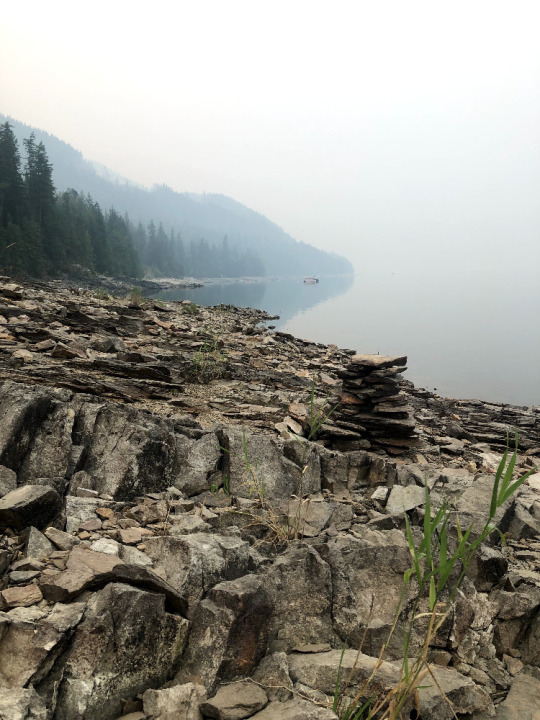
thank you so much!! especially for the photos :0 that's definitely some heavy smoke. it looks just like a foggy morning, but it's more ominous when you know it's smoke instead. i'm sorry your summers and summer activites are ruined by smoke.
i think people in general are experiencing environmental fatigue--literally every day there's some new thing on the news that's actually toxic, new (bad) climate news, new natural disasters, new environmental disasters, new water quality issues, new chemical studies, etc. for many of us, it's our entire lives. people are just tired, and the apathy is part of that. it's also why there is so much environmental/climate doomerism--people just think there's no point in trying anymore. so i can absolutely see that people might not care as much about the smoke anymore. especially following the pandemic, where a lot of people feel like they were robbed of doing activities and want to power on no matter what risks still exist.
unfortunately, apathy about environmental risks do not remove them. it's something i have to think about in my job, because many people are just like. you're telling me i have to worry about something else now too??? but like....yeah, unfortunately they do, because in some cases only knowledge and education will protect people and inform them on how to act.
that's a long few paragraphs to simply say: don't let fatigue of constant fire and smoke risk cause you to stop taking precautions, because it can and will still harm you.
i really feel for all of you in canada this summer, everything i've heard has sounded awful. the fire season this year is really bad.
4 notes
·
View notes
Text
Innovative Approaches to Heavy Mining Equipment Procurement Intelligence
The heavy mining equipment category is anticipated to grow at a CAGR of 3.5% from 2023 to 2030. The category accounts for around 50% to 60% of the overall mining equipment industry. The constantly expanding mining activities in the Asia Pacific region dominates the category. The region is benefiting from high demand for metals and minerals across a range of sectors globally. The mining industry, being one of the foundational sectors of the economy, supports the category growth. Power and cement industries helped the category to thrive due to the rapid expansion of infrastructure. Other major demand drivers are an increase in the rising need for mineral fertilizers to improve agricultural yield, road construction projects, and the use of technology and automation in road construction and mining.
Larger projects require complex, efficient machinery for better efficiency and safety, which is driving the category's expansion. The demand is increasing as a result of the government's significant investments in infrastructural improvements and mining industry reforms. For instance, in the first half of 2023, Chinese investments and fresh agreements in the mining and metals industry reached more than USD 10 billion, representing a 131% increase over the same time in 2022. India, another major country, amended the Mines and Minerals (Regulation and Development) Amendment Act with the goal of streamlining regulations to boost industry participation, freeing up 500 potential mining sites, and encouraging the use of cutting-edge technologies to improve sustainability.
The rise in the development of autonomous heavy mining vehicles is driving the need to organize numerous amounts of cables and wires within the vehicles. Each vehicle contains sensors, cameras, and other connectors. As a result, such wiring needs a heavy equipment cable harness that ensures that electronic circuits perform as designed. Moreover, advancements in technology have led to the development of automatic power crushers. These crushers include hydraulic clamping machinery and spring release system designs. Spring release systems, particularly in cone crushers, establish a protective barrier between the machinery and residual materials. Advancements in clamping technology now enable increased crush-down capacity, facilitating the smooth transition of medium-grade feed from the primary to the secondary crusher.
Order your copy of the Heavy Mining Equipment Procurement Intelligence Report, 2023 - 2030, published by Grand View Research, to get more details regarding day one, quick wins, portfolio analysis, key negotiation strategies of key suppliers, and low-cost/best-cost sourcing analysis
Tools and equipment that are both technologically advanced and environmentally conscious are in higher demand as a result of rising pressure from sustainability goals. Prospects for industry participants to expand and become more efficient are being presented by the increasing adoption and implementation of artificial intelligence (AI) and machine learning (ML) in mining processes. In order to embrace sustainability, a number of developing nations are integrating hybrid technology into the production of mining equipment. In addition, to increase operational efficiency, the industry has also witnessed a large uptake of other technology clusters such as robotics & automation, smart sensors, and 3D printing. A contract for a fleet of zero-emission vehicles was signed between Nouveau Monde Graphite (NMG), a Canadian battery and auto manufacturer, and Caterpillar in April 2023. For NMG's Matawinie Mine, the latter would create an integrated solution that includes a fleet, infrastructure, and services with zero exhaust emissions. The partnership was anticipated to aid NMG's switch from conventional models to Cat machines with zero exhaust emissions.
The category is highly fragmented, given the ongoing growth of digitalization and automation, technology has become a key differentiator for the firms operating in this category. The primary players are concentrating on lowering the extraction and heavy equipment maintenance costs by using cost-reducing innovations. Other large-scale industries are acquiring new technologies embedded in the heavy machinery and equipment that they use regularly to increase efficiency and reduce costs in production, processing, and delivery. As mining operations expand globally, companies compete to establish a strong presence in various regions by tailoring their equipment to suit specific geographic and geological conditions. Some companies collaborate or form partnerships to combine expertise and resources, aiming to develop more comprehensive and advanced mining solutions.
When determining the category cost, there are a number of factors to take into consideration such as ownership costs, fixed expenses, machine costs, insurance, and taxes. Additional expenses that occasionally fall under the fixed category include the cost of a spare parts inventory, special tools required for operation or maintenance, and structures required to house the machine. Another expense is variable cost, which only appears while a machine is in use. Some of these are consumables, routine maintenance supplies (such as engine oil and filters), energy (such as fuel or electricity), and repair charges. An essential expense is the time value of maintenance and repairs. Maintenance costs of heavy mining machinery are significantly high. Most machines' total maintenance and repair expenses during their lifetimes are likely to be equal to 75% of the new machine's cost. For instance, heavy-duty hydraulic mining can price around anywhere between USD 950,000 - USD 1,650,000. Another important tool - a multipurpose dredger for sand pumping, prices for which, can range between USD 360,000 - 450,000.
Selecting the appropriate heavy mining machinery is necessary for significantly improving production quality, project efficiency, cost savings, profitability, and safety at any job site. When sourcing the category, it is important to seek for quality of the machinery, horsepower, weight handling capacity, the cost of the equipment, and the experience of the suppliers. Asia Pacific (APAC) is the region with the biggest revenue in the market for heavy construction and mining equipment due to the region's expanding population and the resulting need for considerable building expenditure.
Heavy Mining Equipment Procurement Intelligence Report Scope
• Heavy Mining Equipment Category Growth Rate: CAGR 3.5% from 2023 to 2030
• Pricing growth Outlook: 4% - 5% (annual)
• Pricing Models: Spot pricing, Fixed pricing, Contract Pricing, Competition based pricing
• Supplier Selection Scope: Cost and pricing, Past engagements, Vendor evaluation, Supply chain and Logistics
• Supplier selection criteria: Service Support, Cost & Pricing, Project Efficiency, Transportation and Handling, Technical Specifications, Operational Capabilities, Regulatory Standards and Mandates, Innovations, and Others.
• Report Coverage: Revenue forecast, supplier ranking, supplier matrix, emerging technology, pricing models, cost structure, competitive landscape, growth factors, trends, engagement, and operating model
Browse through Grand View Research’s collection of procurement intelligence studies:
• Drilling Equipment & Consumables Procurement Intelligence Report, 2023 - 2030 (Revenue Forecast, Supplier Ranking & Matrix, Emerging Technologies, Pricing Models, Cost Structure, Engagement & Operating Model, Competitive Landscape)
• Industrial Motor Procurement Intelligence Report, 2023 - 2030 (Revenue Forecast, Supplier Ranking & Matrix, Emerging Technologies, Pricing Models, Cost Structure, Engagement & Operating Model, Competitive Landscape)
Key companies profiled
• Epiroc, Boart Long year Ltd
• Caterpillar Inc
• China Coal Energy Group Co. Ltd
• Vipeak Mining Machinery Co. Ltd
• Guangdong Leimeng Intelligent Equipment Group Co. Ltd
• Henan Baichy Machinery Equipment Co. Ltd
• Komatsu Ltd
• Liebherr
• Metso Qutotec
Brief about Pipeline by Grand View Research:
A smart and effective supply chain is essential for growth in any organization. Pipeline division at Grand View Research provides detailed insights on every aspect of supply chain, which helps in efficient procurement decisions.
Our services include (not limited to):
• Market Intelligence involving – market size and forecast, growth factors, and driving trends
• Price and Cost Intelligence – pricing models adopted for the category, total cost of ownerships
• Supplier Intelligence – rich insight on supplier landscape, and identifies suppliers who are dominating, emerging, lounging, and specializing
• Sourcing / Procurement Intelligence – best practices followed in the industry, identifying standard KPIs and SLAs, peer analysis, negotiation strategies to be utilized with the suppliers, and best suited countries for sourcing to minimize supply chain disruptions
#Heavy Mining Equipment Procurement Intelligence#Heavy Mining Equipment Procurement#Heavy Procurement Intelligence#Heavy Mining Equipment Market#Heavy Mining Equipment Industry
0 notes
Text


Closer to home
In 1989, I WENT TO THE SAVE THE STEIN VALLEY GATHERING. I joined with many others and climbed to alpine elevations in the Valley, near Lytton in southwestern British Columbia. I spent a couple of days listening to First Nations elders and activists and scientists from near and far. The non-native activists spoke primarily of helping to preserve an intact and unlogged watershed, a “pristine wilderness.” The First Nation elders spoke of protecting their traditional territory and of a hope of regenerating traditional ways.
The U.S. Wilderness Act states that parks are places “where man himself is a visitor who doesn’t remain.” But isn’t it industrial modes of living that threaten the organic world? Isn’t it how we live, and not simply our presence, which really makes the difference? From an essay by Marcus Colchester:
Many indigenous peoples remain perplexed by western views of what conservation means. “My Dad used to say: ‘that’s our pantry.’ We knew about all the plants and animals, when to pick, when to hunt,” remarked Ruby Dunstan of the Nl’aka’ -pamux people, who have been trying to prevent the logging of their ancestral lands around Stein Valley in Western Canada. “But some of the white environmentalists seemed to think if something was declared a wilderness, no-one was allowed inside because it was so fragile. So they have put a fence around it, or maybe around themselves.[6]”
The fact is that humans, like every living species, need a habitat. Call it a territory if you will, but we need a place that we know intimately, that creates us as we create it. And because indigenous peoples in North America had this intimacy, it was incumbent on them to protect their land bases from incursion and invasions, especially destructive ones. After all, as Ruby Dunstan pointed out, these were their “pantry”, land bases that were part of their sustenance and their lives in myriad ways.
The lands weren’t untouched by humans. In fact, humans lived within most of the “wilderness areas” that became parks. To an outsider they appeared “pristine’, “untouched”, “wild”, but, in fact, they were closer to a type of permaculture on a grand scale. Humans had inhabited many of these “wilderness areas” for lit rally thousands of years. That they were so rich in their abundance as well as appealing in their natural beauty is really a testimony to the organic ways of their human inhabitants who were determined not to spoil their pantries but to respect and understand them.
The Stein Valley, like Yosemite and Banff, was a living example of harmonious human occupation. The valley had been significant to the Nlaka’pamux people for thousands of years. It provided for them. There are a large number of pictographs still visible today throughout the valley, from small single symbols to one of the largest pictograph sites in Canada. At Asking Rock near Stryen Creek, the Nlaka’pamux can stop to pray and ask permission to travel the valley safely.
According to the organization BC Spaces for Nature
Evidence of the Nlaka’pamux’s inhabitancy is found throughout the valley. Where the Indians once wintered in gigantic pithouses at the confluence of the Fraser shallow depressions of their winter storehouses can still be found. Numerous culturally modified trees, cedar trees with large, rectangular strips of bark missing, can be found near Teaspoon Creek. This small grove of cedars provided an important source of fibre for cord, clothing, roofing, basketry, and insulating materials.[7]
In 1993-1994, protests in Clayoquot Sound, also in British Columbia, reached a climax with nearly 800 environmental protestors arrested. This was the largest act of civil disobedience in Canadian history. Needing to heal the fracture between itself and many environmentalists, the government at the time doubled the provincial park land-base in BC. As a result the Stein Valley Provincial Park was created as an area to be co-managed by the Lytton First Nation and BC government. There is allowance for the Stein Valley Nlaka’pamux Heritage Park to be used for “spiritual” activities, but I don’t know at this time whether the Stein is also being used for subsistence activities or not.
#freedom#ecology#climate crisis#anarchism#resistance#community building#practical anarchy#practical anarchism#anarchist society#practical#revolution#daily posts#communism#anti capitalist#anti capitalism#late stage capitalism#organization#grassroots#grass roots#anarchists#libraries#leftism#social issues#economy#economics#climate change#climate#anarchy works#environmentalism#environment
0 notes
Text
Premium Hot Tub Covers in Canada: Protect Your Investment Year-Round
Just as you would safeguard any valuable asset, protecting your hot tub is crucial, especially in Canada’s diverse and often unpredictable climate. A premium hot tub cover serves as a crucial investment, providing the necessary protection from harsh weather conditions while enhancing energy efficiency and reducing maintenance. By understanding the importance of these covers, you can ensure the longevity and quality of your hot tub, allowing you to enjoy your outdoor oasis year-round.
Visit our website : https://canadahottubcovers.net/
Why Invest in a Premium Hot Tub Cover?
The need for a premium hot tub cover cannot be overstated, especially in Canada’s diverse climate. Protecting your investment against the elements is crucial for maintaining the quality and longevity of your hot tub. By choosing a high-quality cover, you can safeguard your tub from various weather conditions while also enhancing its overall efficiency.
Protection from Harsh Weather Conditions
Any savvy hot tub owner knows that Canadian winters can be brutal. A premium hot tub cover acts as a shield against extreme cold, heavy snowfall, and damaging UV rays, ensuring that your hot tub remains in excellent condition year-round.
Energy Efficiency
From a financial standpoint, a high-quality cover significantly improves energy efficiency. By providing effective insulation, it helps retain the heat in your hot tub, allowing you to reduce heating costs over time. This means lower utility bills and less wear on your heating system.
This energy-saving aspect is not just beneficial for your wallet; it's also an environmentally responsible choice. By keeping your hot tub properly insulated, you consume less energy and contribute to a more sustainable lifestyle. Investing in a premium hot tub cover is a win-win situation for both your finances and the environment.
Preventing Debris and Contamination
With a premium cover, you can easily keep unwanted debris and contaminants out of your hot tub. Leaves, dirt, and other debris can accumulate quickly, turning your relaxation oasis into a maintenance headache.
A clean hot tub is imperative for both hygiene and functionality. By using a cover, you not only keep your water clean and clear but also minimize the frequency of chemical treatments and cleaning sessions. This means more time enjoying your hot tub and less time maintaining it, making your investment last longer and perform better.
Features of Premium Hot Tub Covers
Any outdoor investment deserves high-quality protection, and premium hot tub covers offer a slew of features designed to cater to your hot tub's needs year-round.
Durable Materials
Features such as marine-grade vinyl and high-density foam are commonly used in premium hot tub covers, ensuring that they can withstand Canada’s extreme weather conditions. These materials resist UV rays, moisture, and temperature fluctuations, guaranteeing longevity and reliable performance.
Custom Fit and Design
Covers that are tailored to your specific hot tub dimensions provide enhanced insulation and protection. A custom fit prevents gaps that can lead to heat loss or debris entering the tub, maximizing your hot tub’s efficiency and cleanliness.
Plus, a well-fitted cover complements the design of your hot tub, ensuring a sleek aesthetic while optimizing energy retention. You can enjoy your hot tub without worrying about external factors that could diminish its performance or increase maintenance costs. Custom covers not only create an airtight seal but also blend seamlessly with your outdoor decor, enhancing the overall look of your space.
Safety Features
Covers equipped with reinforced locking straps and child-proof locks significantly improve safety, giving you peace of mind, especially in households with children or pets.
Premium covers prioritize your safety by preventing accidental slips or falls into the tub while also ensuring that unauthorized access is restricted. This way, you can enjoy your relaxation time knowing that your family is safe from potential hazards associated with an unattended hot tub.
Insulation Value
Features like high-density foam inserts significantly enhance the insulation value of your cover, which is crucial in Canada’s varying climates.
Safety and energy efficiency go hand in hand; a well-insulated cover keeps your water warm and reduces heating costs. This not only saves you money but also minimizes the environmental impact of maintaining your hot tub, allowing you to enjoy your investment without the guilt of excessive energy consumption.
How to Choose the Right Hot Tub Cover in Canada
Despite Canada’s vast and varied climate, selecting the right hot tub cover can significantly enhance your hot tub experience. The right cover will not only protect your investment but also ensure it remains enjoyable throughout every season.
Consider Your Climate
To effectively choose a hot tub cover, you must first consider the specific climate of your region. In Canada, temperatures can drop well below freezing, while summers can be sunny and warm. A cover designed for extreme cold will provide the insulation necessary to prevent heat loss, while UV-resistant features will protect against sun damage during the hotter months.
Measure Your Hot Tub Accurately
For an optimal fit and maximum protection, it’s crucial to measure your hot tub precisely. This includes accounting for dimensions like width, length, and height, ensuring that the cover will fit securely and seal effectively.
It is recommended that you take measurements of your hot tub at its widest points and include any additional features that might protrude, such as jets or steps. Ensure you have the correct dimensions to prevent gaps, which can lead to heat loss and debris accumulation. Double-checking your measurements will save you time and money by ensuring you invest in a cover that fits perfectly.
Evaluate Your Budget
Budget is another important factor when selecting a hot tub cover. Premium options can vary widely in price, so it's crucial to determine how much you’re willing to spend while considering the long-term benefits of choosing quality over lower-priced alternatives.
Your budget should reflect not only the features you want but also the quality necessary for your specific climate. Investing in a higher-quality cover may cost more upfront but will ultimately save you money in energy costs and maintenance, providing better insulation and durability suited for Canadian winters.
Choose the Right Color and Style
Your hot tub cover is not only functional but can also enhance the aesthetic of your outdoor space. When choosing a color and style, consider options that complement your backyard decor and reflect your personal taste.
Color plays a significant role in heat retention as well; darker colors tend to absorb more heat, which can be beneficial in cooler seasons. Additionally, selecting a style that fits your overall landscape will make your hot tub an inviting focal point, allowing you to fully enjoy your outdoor oasis.
Benefits of Buying from a Canadian Supplier
Now is the perfect time to consider the advantages of purchasing your premium hot tub cover from a Canadian supplier. Not only can you enjoy better products tailored to your needs, but you also contribute positively to your local economy.
Supporting Local Businesses
Benefits of buying from Canadian suppliers include the satisfaction of supporting local businesses. By choosing to shop locally, you help maintain jobs and stimulate economic growth in your community, ensuring a more resilient market for everyone.
Faster Shipping and Better Customer Service
Buying from a local supplier means you can expect faster shipping and more personalized customer service. When you order from a Canadian company, your cover can often arrive within days, avoiding lengthy international shipping delays.
Supplier responsiveness is another major benefit. Local companies understand the Canadian market and can provide you with timely support, from product inquiries to after-sales service, giving you peace of mind with your purchase.
Products Designed for Canadian Weather
Better insulation and durability are imperative when it comes to hot tub covers suited for our diverse climate. Canadian suppliers offer products specifically designed with the country’s weather patterns in mind—whether it’s handling extreme cold or heavy snowfall.
Local manufacturers often conduct extensive testing to ensure their covers resist UV degradation and seal in heat, ensuring your hot tub remains ready for use all year long. This tailored approach enhances your investment's lifespan while delivering superior performance in Canadian conditions.
Warranties and Guarantees
Any reputable Canadian supplier will offer robust warranties and guarantees, providing you with confidence in your investment. Knowing your premium hot tub cover is covered protects you from unforeseen issues down the line.
With local companies, you typically enjoy more accessible warranty services and support. If you encounter any problems, you can easily reach out to them for assistance or replacement, making your purchase experience hassle-free and secure.
Installation and Usage Tips
After purchasing a premium hot tub cover, it’s necessary to install and use it correctly to maximize its benefits. Here are some key tips to ensure you protect your investment year-round:
Ensure the hot tub is clean and dry before placing the cover.
Align the cover properly with the hot tub to prevent gaps.
Utilize the locking straps for enhanced security and insulation.
Regularly check for any wear or damage during usage.
Recognizing the importance of these steps will help maintain your hot tub's efficiency and longevity.
Easy Installation Steps
One of the simplest ways to install your premium hot tub cover is to start at one end, carefully laying it down over the hot tub while ensuring it’s centered. Gently press it down to create a snug fit, and don't forget to secure the locking straps. This method will help ensure that your cover is both effective in its insulation and anchored against strong winds.
Proper Usage Guidelines
Usage of your hot tub cover correctly is just as vital as installation. Always make sure to cover your hot tub when not in use—this will help trap heat and keep out debris. When you’re ready to use your hot tub, carefully remove the cover to prevent it from snagging or tearing, and ensure the cover is dried and stored properly during use.
Proper usage not only prolongs the life of your cover but also enhances your hot tub experience. By covering your hot tub whenever it’s not in use, you’ll retain heat more effectively, which translates to energy savings. Regularly inspecting your cover for any signs of wear, such as cracks or tears, will also contribute to its longevity and your safety while using the hot tub.
How to Avoid Common Mistakes
Usage of your hot tub cover should be mindful to avoid damaging it. Always lift the cover vertically from the corners instead of dragging it off. Additionally, never place heavy objects on your cover, as this can cause tearing and other damage.
Steps to avoid common mistakes include being aware of temperature changes; extreme cold can make the material brittle. Also, refrain from forcing the cover into position as it could lead to misalignment or damage. By following straightforward guidelines, you ensure that your premium hot tub cover continues to serve its purpose effectively and protects your hot tub throughout Canada’s diverse climate conditions.
Maintenance Tips for Your Hot Tub Cover
All hot tub covers require maintenance to maximize their lifespan and effectiveness. Regular care ensures that your premium cover continues to provide protection against Canada's harsh weather conditions and retains its energy efficiency. Here are some vital maintenance tips to keep your hot tub cover in top shape:
Regular Cleaning
Any hot tub cover should be cleaned regularly to prevent grime and buildup. Use a mild soap and warm water solution to wipe down the exterior, and rinse thoroughly. This will help maintain its appearance and functionality.
Proper Storage During Off-Season
Off-season storage is crucial for protecting your hot tub cover when it's not in use. Always remove the cover and store it in a dry, cool location. Make sure to keep it away from direct sunlight and possible sources of damage.
Regularly check the storage area for moisture and ensure that the cover is adequately supported to prevent deformation. Using a breathable storage bag can also protect it from dirt and dust while allowing moisture to escape.
Inspect for Wear and Tear
To keep your hot tub cover in excellent condition, conduct regular inspections for wear and tear. Look for any cracks, tears, or signs of deterioration that may affect its performance.
Storage conditions can influence the longevity of your cover. Ensure that it’s not exposed to extreme elements when stored, as this can exacerbate any existing wear, leading to costly repairs or replacements.
Repairing Minor Damage
Storage should include regular assessments for repairable damage. If you discover small tears or cracks, address them quickly to prevent further issues.
Damage should be fixed as soon as possible to prevent water from entering and causing deeper problems. Using a vinyl repair kit can be an effective way to seal small openings and extend the life of your cover.
Premium Hot Tub Covers in Canada: Protect Your Investment Year-Round
Considering all points, investing in a premium hot tub cover is important for protecting your investment and ensuring its longevity, especially in Canada’s diverse climate. By shielding your hot tub from harsh weather, enhancing energy efficiency, and preventing debris contamination, a high-quality cover not only saves you money but also reduces maintenance efforts. Remember to choose a cover designed for your specific needs and climate, as well as to follow proper maintenance practices. Elevate your hot tub experience by safeguarding it year-round with a premium cover that meets your requirements.
0 notes